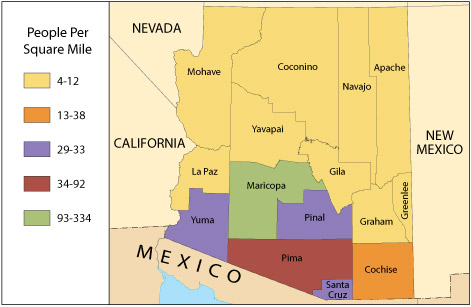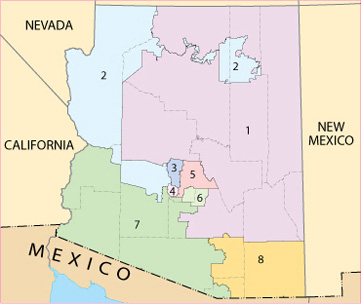|
ARIZONACompare the following two political maps of Arizona. Figure 2.2.4 shows the state's counties. Figure 2.2.5 shows the states congressional districts. All states are divided into voting sections from which U.S. Congress Representatives are elected. The sections are called congressional districts.
The criteria used to create political boundaries vary. County boundaries may be based on size, natural barriers, or the location of major cities. Congressional districts are drawn on the basis of population and demographics, and tend to shift periodically. In both cases the boundaries are mostly determined by humans. Natural barriers may have some impact, but it is not uncommon to disregard natural barriers when drawing up political boundaries. Political maps can provide us with different types of information. For example, since congressional districts are based on the amount of people living in an area, you can use them to determine which areas have denser populations. This is because the denser the population is in an area, the less amount of land there will be in the district, whereas the more spread out the population is in an area, the more land there will be in the district. In other words, if every district were limited to 1000 people, a city block might be a district and an area containing 250 farms might be another district. Though the amount of land in each district would vary greatly, in both cases the districts would still have 1000 people. With that information in mind, which district in Figure 2.2.5 do you think has the densest population? Which district do you think has the least dense population?  
|
About Us | Terms of Use | Contact Us | Partner with Us | Press Release | Sitemap | Disclaimer | Privacy Policy
©1999-2011 OpenLearningWorld . com - All Rights Reserved



